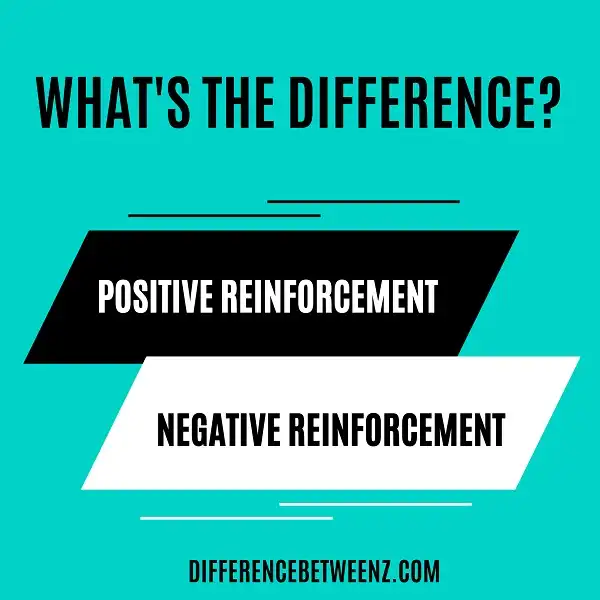When it comes to learning and behavior, there are two main types of reinforcement: positive and negative. Both have their own benefits and drawbacks, which is why it’s important to understand the difference between them. In this blog post, we’ll take a closer look at both reinforcements, so you can decide which one is right for you or your students.
What is Positive Reinforcement?
Positive and negative reinforcement are two important concepts in behavioral psychology. Positive reinforcement occurs when a behavior is followed by a reward, which strengthens the behavior and makes it more likely to occur again in the future. Negative reinforcement also strengthens a behavior, but it does so by removing an unpleasant condition after the behavior is displayed. For example, if you come home from a long day of work and are greeted by your dog wagging its tail, you are more likely to pet the dog in the future because doing so results in a positive outcome (the dog’s tail wagging).
On the other hand, if you have a job that you don’t like and only go to work because you get paid, then your behavior is being negatively reinforced by the removal of the unpleasant condition (not having any money) after you display the desired behavior (going to work). Although positive and negative reinforcement both strengthen behavior, it is important to note that they are two different processes. Positive reinforcement leads to increased happiness and satisfaction, while negative reinforcement can lead to feelings of aversion or violence.
What is Negative Reinforcement?
- Negative reinforcement is a form of operant conditioning, which is a process of learning that occurs as a consequence of the consequences of a behaviour. In the case of negative reinforcement, a behaviour is strengthened by the removal of an unpleasant condition after the behaviour is displayed.
- For example, if a child touches a hot stove and gets burned, they are likely to never touch a hot stove again. In this case, the removal of the unpleasant condition (getting burned) has served to reinforce the behaviour (not touching the hot stove). It should be noted that negative reinforcement is not the same as punishment.
- Punishment involves bringing an unpleasant condition after a behaviour is displayed in an attempt to decrease the likelihood of that behaviour being repeated. Negative reinforcement, on the other hand, strengthens a behaviour by removing an unpleasant condition after the behaviour has been displayed.
Difference between Positive and Negative Reinforcement
Positive and negative reinforcement are two important concepts in behavioral psychology. Positive reinforcement occurs when a behavior is followed by a reward, which strengthens the behavior and makes it more likely to occur again in the future. Negative reinforcement also strengthens a behavior, but it does so by removing an unpleasant condition after the behavior is displayed. For example, if you come home from a long day of work and are greeted by your dog wagging its tail, you are more likely to pet the dog in the future because doing so results in a positive outcome (the dog’s tail wagging).
On the other hand, if you have a job that you don’t like and only go to work because you get paid, then your behavior is being negatively reinforced by the removal of the unpleasant condition (not having any money) after you display the desired behavior (going to work). Although positive and negative reinforcement both strengthen behavior, it is important to note that they are two different processes. Positive reinforcement leads to increased happiness and satisfaction, while negative reinforcement can lead to feelings of aversion or violence.
Conclusion
The difference between positive and negative reinforcement is an important one to understand when training pets or employees. Positive reinforcement creates a desirable behavior by adding a reward, while negative reinforcement removes an unpleasant condition in order to increase the likelihood of the desired behavior. It’s important to be aware of which type of reinforcement you are using so that you can achieve your desired outcome.


